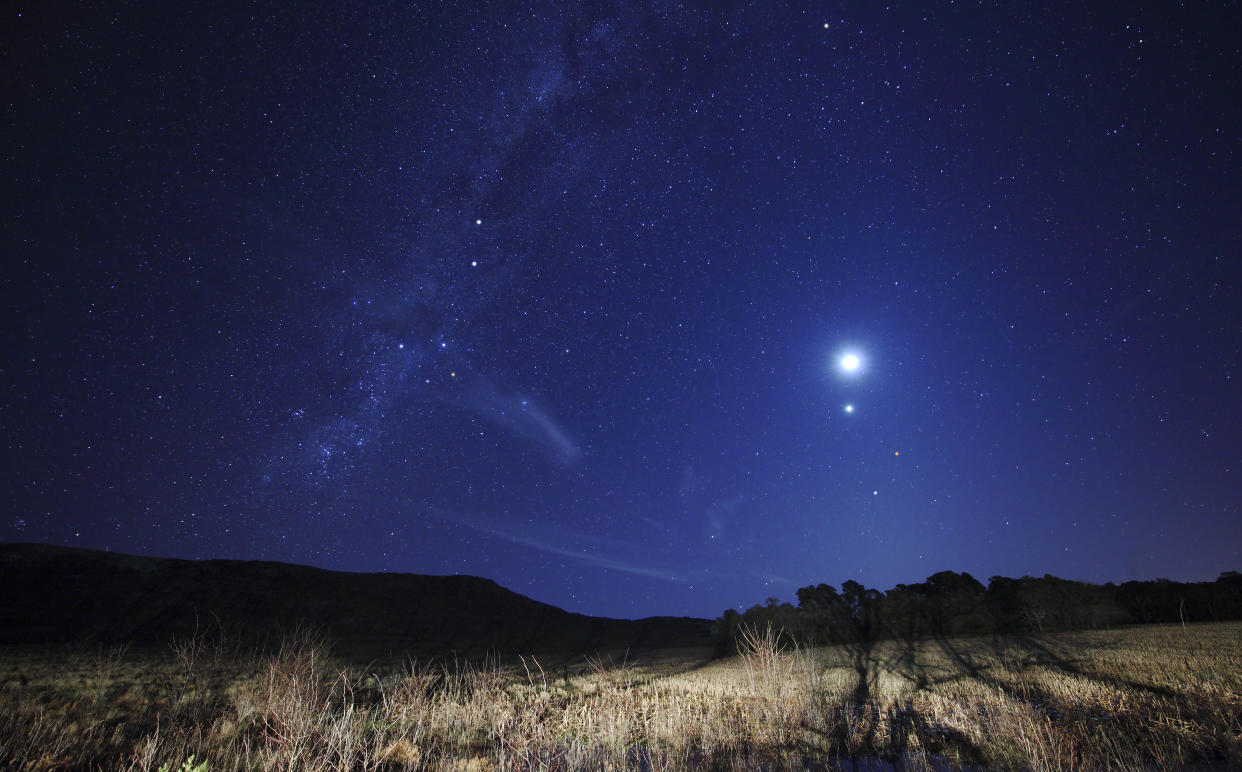Watch the skies tonight to catch Venus, Mars and the Moon close together

The planets Mars and Venus will come together with the Moon in the skies this week, Nasa has said, with the two planets just a "finger’s width apart".
The US space agency says: "Venus is joined by Mars in the July twilight."
The planets are at their closest on Tuesday, with the best time to see them in the early evening.
But experts say they will also be visible on Wednesday if there are clear skies.
Mars and Venus aren’t actually near each other: they just appear so from Earth because they are currently in conjunction.
Read more: Why economists worry that reversing climate change is hopeless
Nasa expert Giada Arney said: "Even during this conjunction, they will still be many millions of miles apart. From our point of view here on Earth, they will appear to be close together."
You’ll need a telescope to catch the conjunction of Mars and Venus, with Mars considerably less bright.
To see the conjunction, head away from built-up areas and light pollution and find a place to watch for Venus at sunset.
Nasa says: “Sunsets in July come with an added bonus: a brilliant gem low in the western sky, calling to us to come and explore its many mysteries. This is the planet Venus. It's our cosmic next-door neighbour – that is, the planet with the closest orbit to the orbit of Earth.
“It's also often thought of as Earth's sister planet, given that it's also a rocky world of the same size, though Venus developed into a hellishly hot world, where Earth became the cool, blue planet we know and love."
Conjunctions happen when two bodies appear to be "next to each other" in the skies, as seen from Earth.
Read more: A 1988 warning about climate change was mostly right
Royal Observatories Greenwich writes: ‘‘From our point of view on Earth, other planets seem to wander about in the sky. Early astronomers first referred to the planets as ‘wandering stars’ because of the way they moved in the night sky far more quickly than the ‘fixed’ stars.
“A number of coordinate systems are used in astronomy to define where an object appears in the sky, similar to the latitude and longitude system we use on the Earth.
"The first, the celestial coordinate system of right ascension and declination, is fixed to certain standard points in the sky and is aligned with the tilt of the Earth.
“Another, known as the ecliptic coordinate system, is fixed instead to the orientation of our Solar System within our galaxy and is measured in ecliptic latitude and longitude.
"If two objects have the same right ascension or the same ecliptic longitude, they are considered to be in conjunction with one another.’


